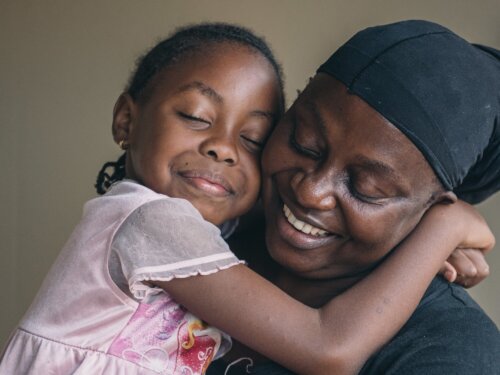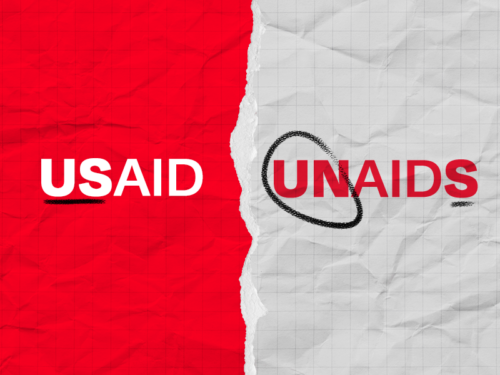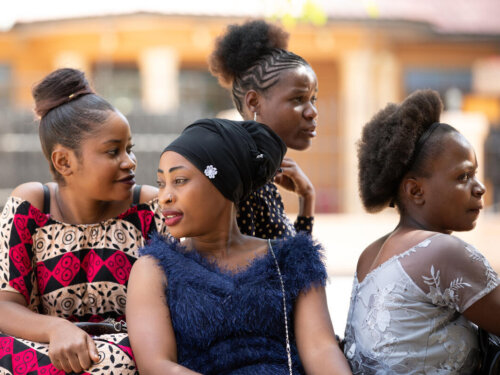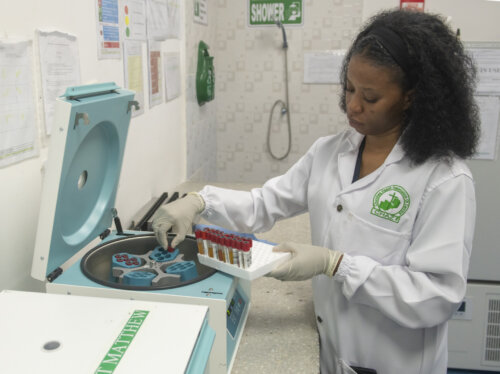IAS 2025: Protecting Progress in the AIDS Fight and Charting a Path Forward
This is a guest (RED)ITORIAL written by Cynthia Kasonde, Medical Laboratory Scientist at Churches Health Association of Zambia and an ambassador of the (RED) and Roche partnership.
The International AIDS Society 2025 Conference on HIV Science, held in Kigali, Rwanda, brought together global experts, researchers, policymakers, and frontline professionals to reimagine the next chapter in the fight against HIV and AIDS. The event was a powerful reminder that ending AIDS as a public health threat requires country-led strategies, strong, integrated health systems, and African-led solutions to shield HIV programs from future political shocks. With the theme “Moving HIV Science into Policy and Practice,” IAS 2025 emphasized urgency, resilience, and the need to translate cutting-edge research into real-world solutions.
I attended IAS 2025 representing the (RED) and Roche partnership, advocating for increased access to diagnostics and stronger lab systems in fighting pandemics and building equitable healthcare. As a lab professional, I shared how diagnostics—though often behind the scenes—are central to care, forming the foundation of treatment, policy, and prevention.
At the Roche x (RED) booth, I delivered a talk titled “How Local Labs Have a Global Impact,” where I shared insights from my work inside a diagnostic laboratory in Lusaka, Zambia. I outlined the critical process from sample collection to test result, emphasizing three key phases: pre-analytical, involving proper collection, storage, and labeling; analytical, which includes accurate testing using technologies like PCR and serology, requiring trained staff, calibrated equipment, and validated methods; and post-analytical, focused on the secure and timely interpretation and reporting of results.
Each step is governed by rigorous quality assurance, because even one mistake can change a life.
Despite diagnostics informing 70% of medical decisions, they receive under 5% of global health funding. Nearly half the global population lacks access to basic testing. This isn’t just a health crisis, it’s an economic one. In 2000, fewer than 800,000 people were on antiretroviral therapy; today, it’s over 30 million, largely due to expanded testing. Yet, many still face delays or missed diagnoses, leading to higher costs, more transmission, and poorer outcomes. Investing in diagnostics is not only ethical, it’s strategic.
In many sub-Saharan labs, a single machine may test for HIV, TB, hepatitis B and C, and HPV. These integrated platforms are lifesaving, especially amid funding cuts. A mother can be tested for HIV and screened for cervical cancer in one visit. This efficiency isn’t just practical, it’s transformative.
IAS 2025 spotlighted urgent shifts in the global HIV response. U.S. funding cuts have reversed gains, reducing ARV access in regions like Mozambique and Latin America. African scientific leadership shone through, with initiatives like the Africa Cure Consortium and outbreak responses such as Rwanda’s Marburg containment. Innovations like Lenacapavir, a long-acting PrEP injection now WHO-recommended, signaled a major shift. Zambia’s adoption of CAB-LA and oral PrEP options showed promise, especially for adolescents, a group facing high rates of suicidal ideation. Advances in bNAbs and CAR-T therapy also opened new frontiers.
Diagnostics underpin these advances. In the face of funding shortfalls, timely and affordable testing ensures smart use of limited ART. For innovations like Lenacapavir, diagnostics track adherence and resistance. In adolescent care, they support tailored mental health interventions. And in cure research, they measure viral load and immune response. Diagnostics are the silent enablers; without them, prevention and treatment efforts stall.
Speakers at IAS stressed that tools alone aren’t enough, it’s how we use them and who we empower that matters. More meaningful public-private partnerships are needed. Countries don’t just need donors, they need committed partners. The Roche x (RED) collaboration is one such model. It’s not just about providing machines but also training people, embedding sustainable systems, and building lasting infrastructure. As I said during my talk, “The Roche x (RED) partnership isn’t about charity, it’s about building resilient systems that last.”
Another key message was the call for true country ownership. Governments must design health reforms rooted in local realities, not donor preferences. At CHAZ, we live this every day. Our work is embedded in Zambia’s national lab network, building systems that are both technically sound and community-owned.
A deeply personal takeaway from IAS 2025 was the growing recognition of lab professionals. Too often overlooked, our work powers the data behind decisions, alerts, treatments, and policies. A missed HIV diagnosis isn’t just one error; it delays care, spreads disease, and distorts data. Labs remain underfunded, but our role is finally being acknowledged. As I said in Kigali, “When I speak on behalf of (RED) and Roche, I’m amplifying the voices of lab professionals across Africa, people whose work is vital but too often invisible.”
Looking ahead, the future of diagnostics is bright. New research in treatments, vaccines, and testing is promising, but innovation is meaningless if it’s not accessible. Equity must guide every step. Representing (RED), Roche, and countless African lab professionals at IAS 2025 was an honor. We may not always be seen, but our impact is felt worldwide. “We may work in the background, but our work speaks volumes, and with partners like (RED) and Roche, the world is finally listening.”
The end of AIDS won’t come from breakthroughs alone. It will come from everyday acts of clarity: one test, one diagnosis, one life at a time.








